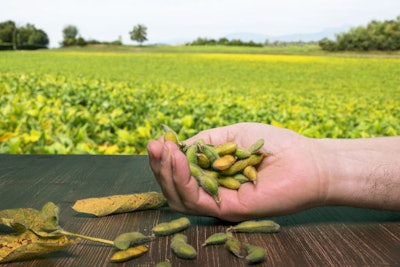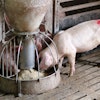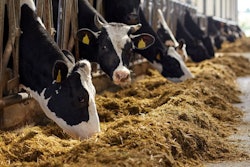
Organic farmers show signs of contemplating expansion amid high feed costs
U.S. farmers may be planning another major expansion into organic soybean production, but for now animal producers are still scrambling for organic feed alternatives, according to organic commodity marketplace Mercaris.
Organic soybean prices are nearing US$40 per bushel, and could exceed US$50 this summer on account of shortages triggered by multiple trade actions against India, which prior to 2021 supplied nearly half the organic soybeans consumed in the U.S., according to Ryan Koory, vice president of economics at Mercaris. And just as higher soybean prices have spurred predictions of bumper crop of soybeans at conventional farms this year, organic sector growers have also given indications they plan to plant more beans this year.
“We don’t have the tools to do a prospective planting survey, so what we did as a way of trying to understand where acreage is going is we interviewed people who work in organic seed sales to assess what they are seeing,” Koory said. Demand for organic soybean seed, he said, has increased 20-40% this spring.
Organic soybean acreage grew 19% last year in response to multiple supply chain challenges, including container shipping shortages, new tariffs and news that the U.S. Department of Agriculture (USDA) would no longer recognize the agency heading India’s organic certification standards. But there’s also limited evidence that organic farmers plan to reduce their corn acreage. With prices for organic corn exceeding US$10 per bushel, seed sales remain on par with last year, raising questions about exactly where all those additional soybeans will be planted.
“It seems likely the soybean expansion is coming out of acres that would be fallow this year, or where you might be doing some other nitrogen building crop such as hay or field peas,” Koory said. “Or maybe some minor crop like say spring wheat that you harvest for feed. Things that generally don’t generate a lot of returns.”
While that may seem like the logical option, Koory noted that because organic producers must factor crop rotation into their plans, it could be difficult to maintain the expanded acreage long term. Increased seed sales could also imply that farmers intend to plant on lower-productivity soil, which could reduce yields this fall.
“If they’re planting on areas that wouldn’t be profitable at US$20 per bushel, the reason is they don’t have the yield,” Koory said.
But until this fall’s crop comes online, organic feed ingredients will remain difficult to come by. The U.S. continues to import Indian soybean meal supplies where possible, Koory said, but trade has fallen to a fraction of normal volumes. In the first quarter of 2022, he said, the U.S. has imported less than 10% the amount of soybeans it purchased during the same time frame last year. And with Indian soybean meal now facing tariffs near 300%, trade seems unlikely to resume.
“What we’ve seen so far is a scramble to source whatever you can,” Koory said, with demand increasing for everything from canola and sunflower to green peas and flax. “Anything you can do to get protein in that ration to offset the loss of soybean meal.”











